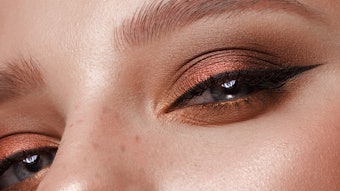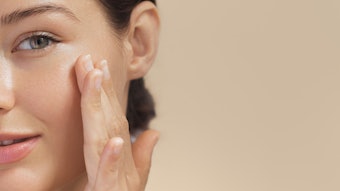Recent research has shown using Botox can help ease the suffering of those experiencing frequent migraines, and a new clinical trial has confirmed the results.
Thanks to a procedure borrowed from cosmetic surgery, Michelle Cramer has now lost most of her frequent and debilitating migraine headaches, as well as her frown lines. Cramer, a graphics illustrator in Williamsburg, Virginia, suffered about 15 migraines a month for close to a decade until she had surgery to "disarm" various nerves that were apparently controlling her headaches. "I get maybe two migraines a year now," she said.
Cramer, 38, participated in a clinical trial to evaluate the surgery, the results of which are published in the August issue of Plastic and Reconstructive Surgery. "The theory here is that there are sites outside the brain in the face and back of the head that can trigger migraines and, if you surgically remove the migraine trigger, the migraine will improve and there's certainly a precedent for the idea," said Dr. Richard Lipton, director of the Montefiore Headache Center in New York City. He was not involved in the new study.
Using surgery to correct migraine is a relatively new idea. According to background information in the article, some 30 million Americans suffer from migraines, a disproportionate number of them women.
The study enrolled 75 patients with moderate to severe migraine headaches. Migraine trigger sites in the forehead, cheek and back of the head/neck were identified, then injected with the face-lifter Botox to see if the drug "disarmed" them.
If the trigger sites responded to the Botox, which lasts about six to eight weeks, then the patients underwent surgery to remove the trigger areas. Forty-nine patients were randomized to receive "real" surgery and 26 to "sham" surgery. The surgeries differed depending on the trigger points.
"For the patients with forehead headaches, we removed the frowning muscles. That's why they look better, more cheerful," explained Dr. Bahman Guyuron, lead author of the study and professor and chairman of the department of plastic surgery at University Hospitals Case Medical Center in Cleveland.
Those with temple headaches underwent an operation on a small nerve, which also lifted their eyebrows. And, for those with a back-of-the-head trigger, Guyuron replaced a small amount of muscle around the occipital nerve with fatty tissue to shield the nerve from being squeezed by the muscle.
After one year, almost 84% of patients receiving actual surgery reported a reduction in migraines of 50% or more while slightly more than 57% said that their migraines had completely disappeared, versus 57.7% and 3.8%, respectively, in the sham group.
Some patients did experience temporary numbness in parts of the face, said Guyuron, but it usually went away. "One thing that's impressive is the migraine-free rates," Lipton said. "The other thing that was impressive is they did a year of follow-up. Usually, everything is placebo-responsive but those responses are usually short-lived. A year is really impressive."
Guyuron believes the procedure, which he has already performed on more than 400 individuals, could benefit a wide range of migraine sufferers. "It really is not invasive surgery. It takes about an hour to do the operation for each trigger site, three-and-a-half hours is the maximum," he said. "They go home right after the surgery and go back to work within a week."
But Lipton wants to see another study, and feels surgery should be reserved for the most intractable cases. "This is obviously not for everyone. This is for people who are really suffering, who've had adequate trials of medical therapy and who have an identifiable trigger point and get better following a Botox injection," Lipton said. "There are a lot of hurdles someone would have to jump over before I would send them for surgery."
More information
There's more on migraines at the U.S. National Institute of Neurological Disorders and Stroke.
HealthDay News, July 31, 2009










